Spring Roof Maintenance: A DIY Guide for Greater St. Louis Homeowners
GET A FREE ESTIMATE
An Introduction To DIY Spring Roofing Inspection
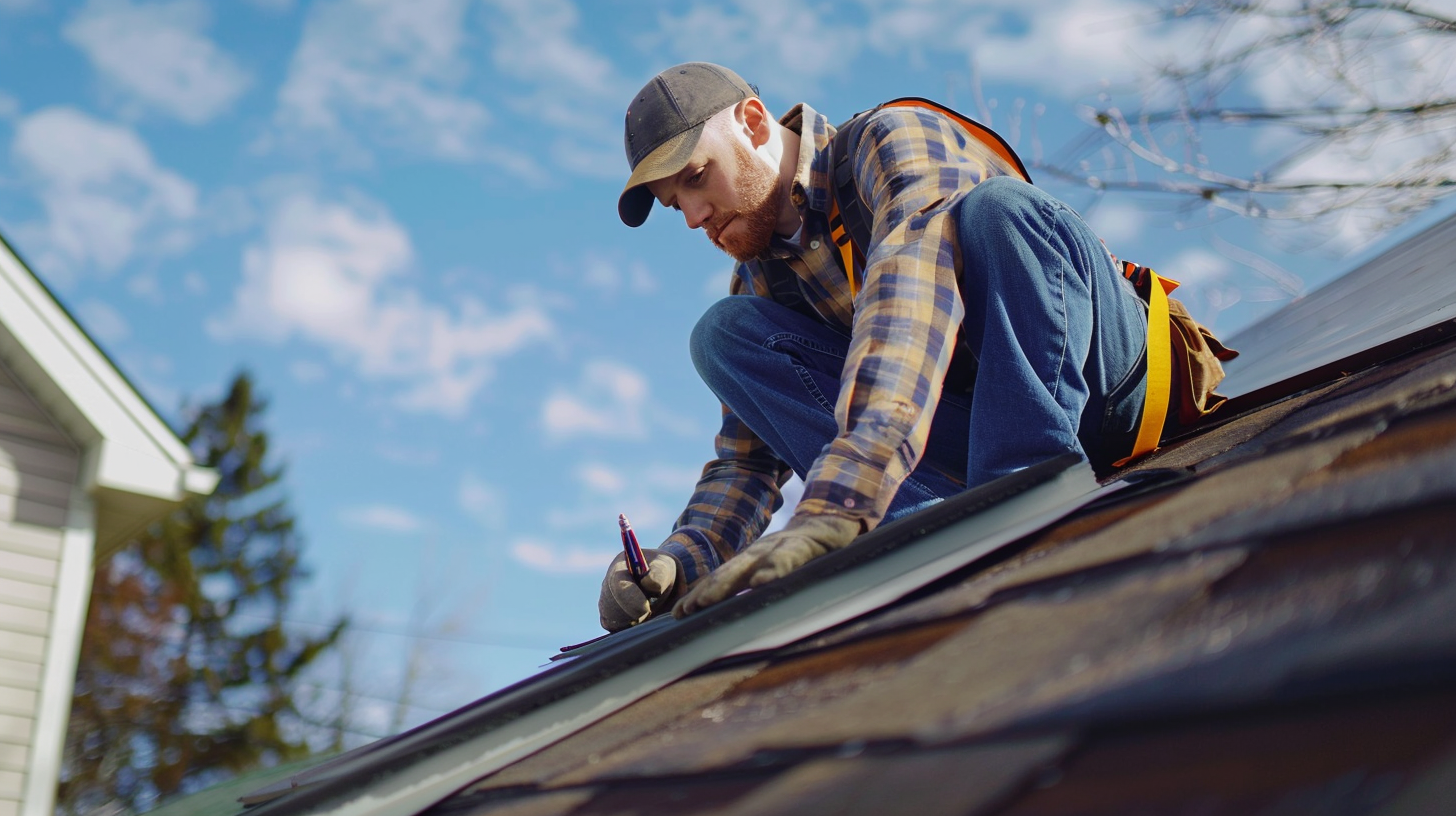
Key Takeaways
- Regular roof maintenance is essential, especially in spring, for prolonging roof life and preventing costly repairs.
- Winter weather can cause significant damage to roofs; spring is the best time for damage assessment and repairs.
- Key maintenance tasks include cleaning gutters, inspecting and repairing shingles, removing moss and algae, checking roof flashings, and examining the attic.
- Safety is paramount in DIY roof maintenance; use proper equipment and consider professional help for complex tasks.
- Regular inspections, ideally twice a year, are crucial for early detection of roof damage.
Understanding the Importance of Roof Maintenance
Why Regular Roof Inspections are Essential
As spring begins, the regular upkeep of your roof aids in prolonging its lifespan, preventing expensive repairs, and safeguarding the integrity of your home's interior. With the onset of spring, denoted by the spring equinox, homeowners in both the northern hemisphere and southern hemisphere find it an opportune time to conduct roof inspection and maintenance activities.
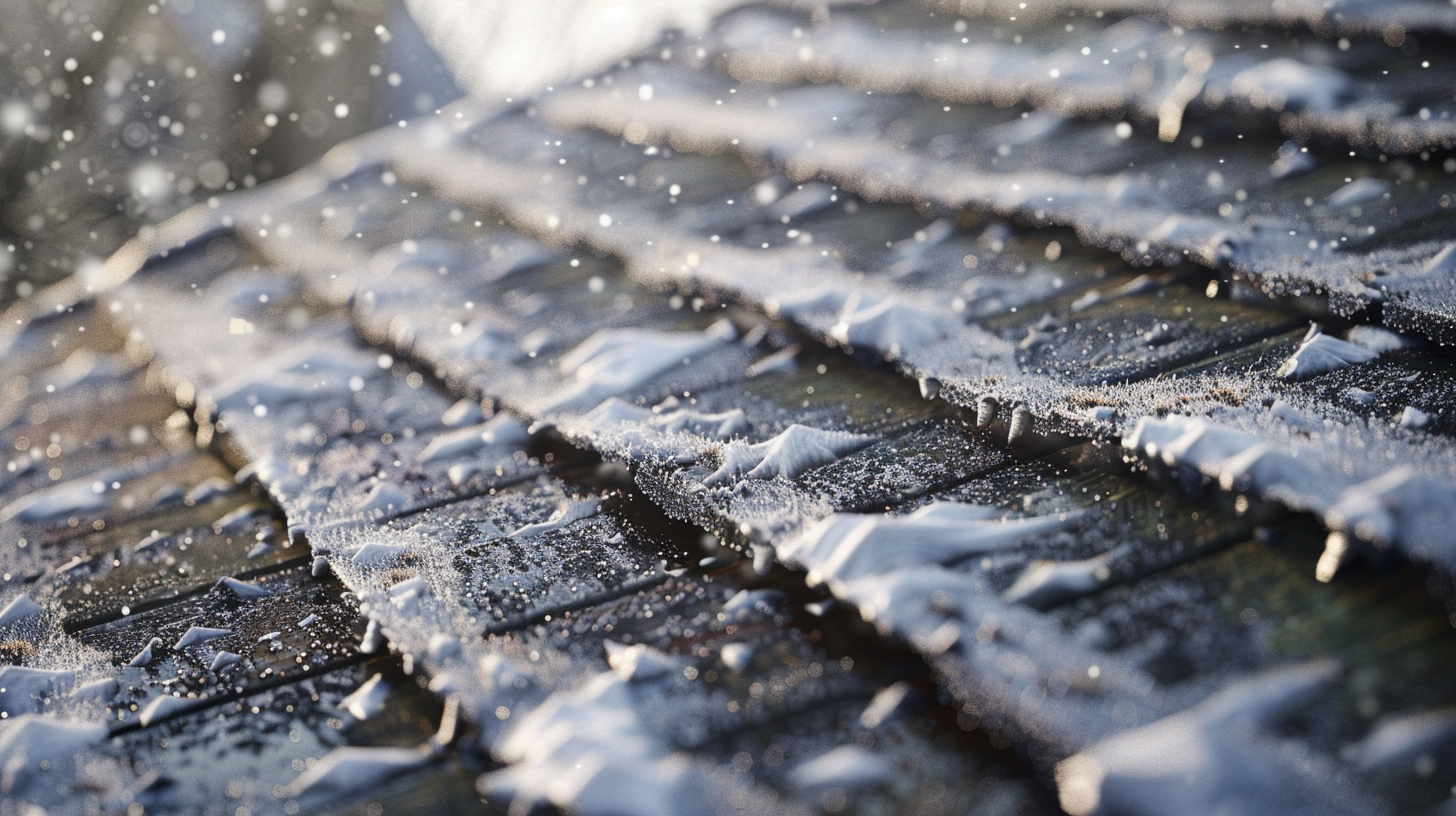
Navigating the Aftermath of Winter's Wrath
The transition from the coldest months to the warmth of spring brings to light the potential problems inflicted by winter's harsh conditions. The freeze-thaw cycle, prevalent in many regions experiencing the four seasons, can wreak havoc on your roof, necessitating a thorough evaluation and immediate remediation of any damage spotted. As warm air replaces the cold, it exacerbates the effects of this cycle, making it imperative to address any issues promptly.
Step-by-Step Spring Roofing Maintenance Tasks
1. Cleaning the Gutters: Prevent Water Damage and Roof Replacement
The significance of clean gutters extends beyond aesthetic appeal, serving a crucial role in preventing water damage to both your roof deck and home's foundation. Taking a hands-on approach to gutter cleaning ensures the smooth flow of water away from your property, effectively safeguarding against moisture-related damages.
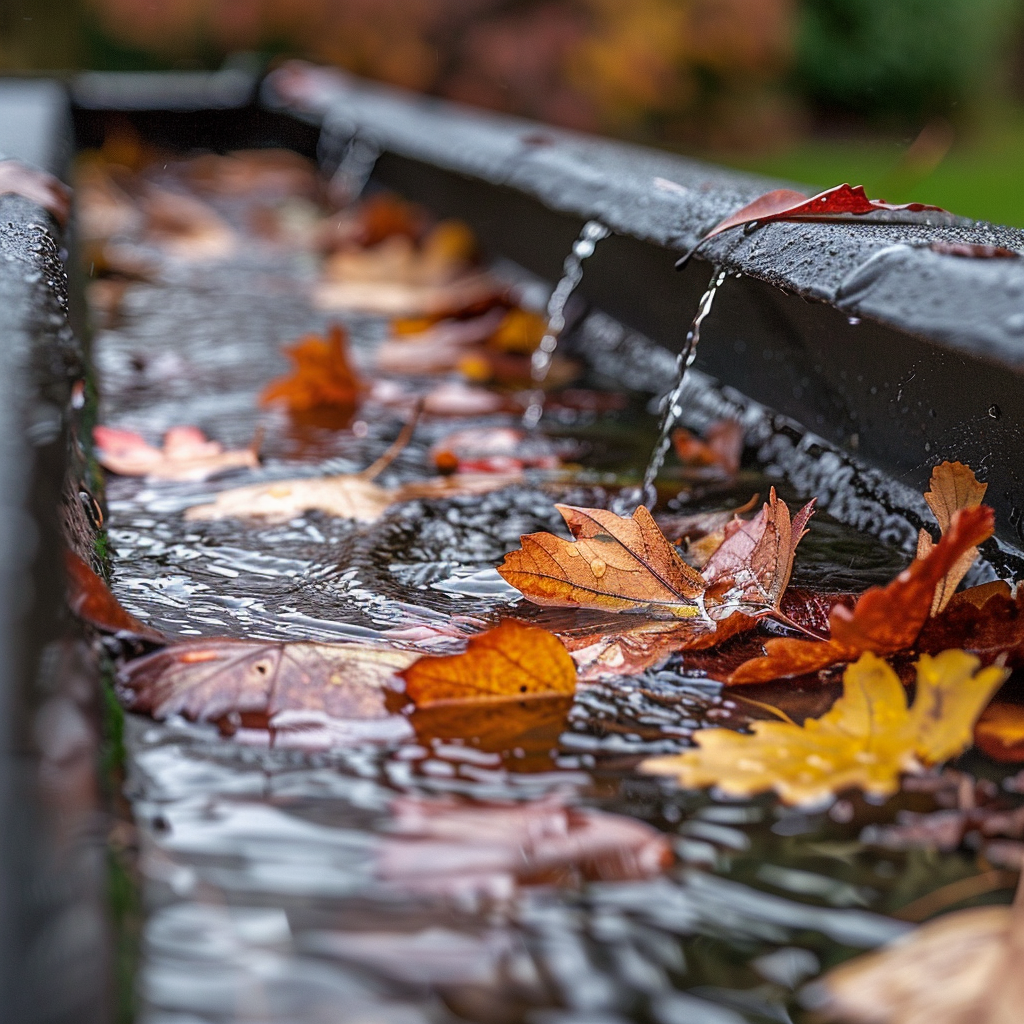
How to Clean Your Gutters: Use a ladder to reach your gutters, remove debris by hand or with a gutter scoop, and flush the gutters with water to check for proper flow and leaks.
2. Inspecting and Repairing Shingles
Shingles act as the protective barrier against environmental adversities. Inspecting them for any signs of wear or damage is crucial in the early spring season. Addressing issues such as cracking, loosening, or missing shingles promptly can prevent water ingress and further structural damage.
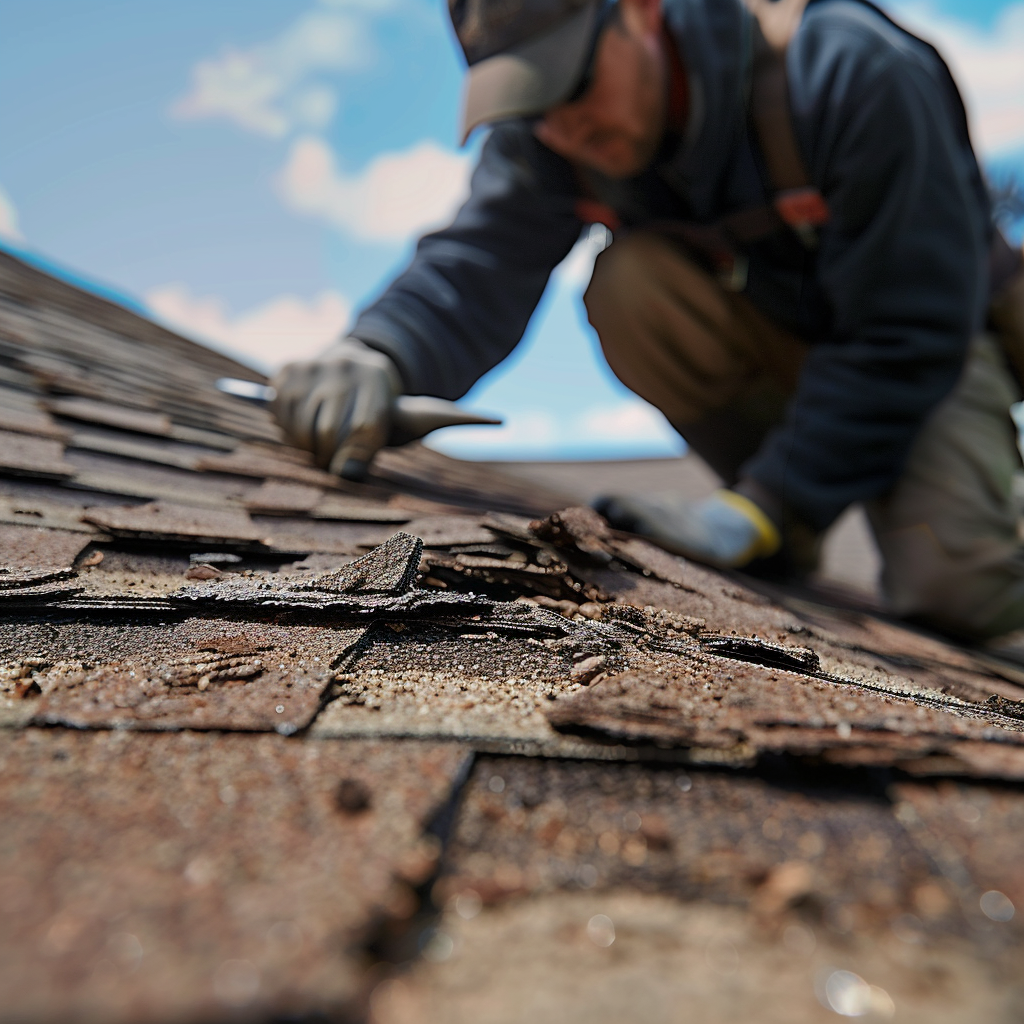
Identifying Shingle Damage: Look for cracked, missing, or loose shingles. These can lead to leaks and water damage.
DIY Shingle Repair: If you're comfortable, replace damaged shingles yourself. Be sure to follow proper safety measures while on the roof.
3. Checking for Moss and Algae
The presence of moss and algae on your roof is not only an aesthetic concern but also a potential precursor to roof deterioration. Their capacity to retain moisture against the roof surface can lead to rot and damage over time. Engaging in regular roof maintenance, especially around the time of the summer solstice, is crucial. Implementing gentle removal techniques and preventive measures, such as the installation of metal strips, can effectively mitigate their growth and preserve the integrity of your roof.
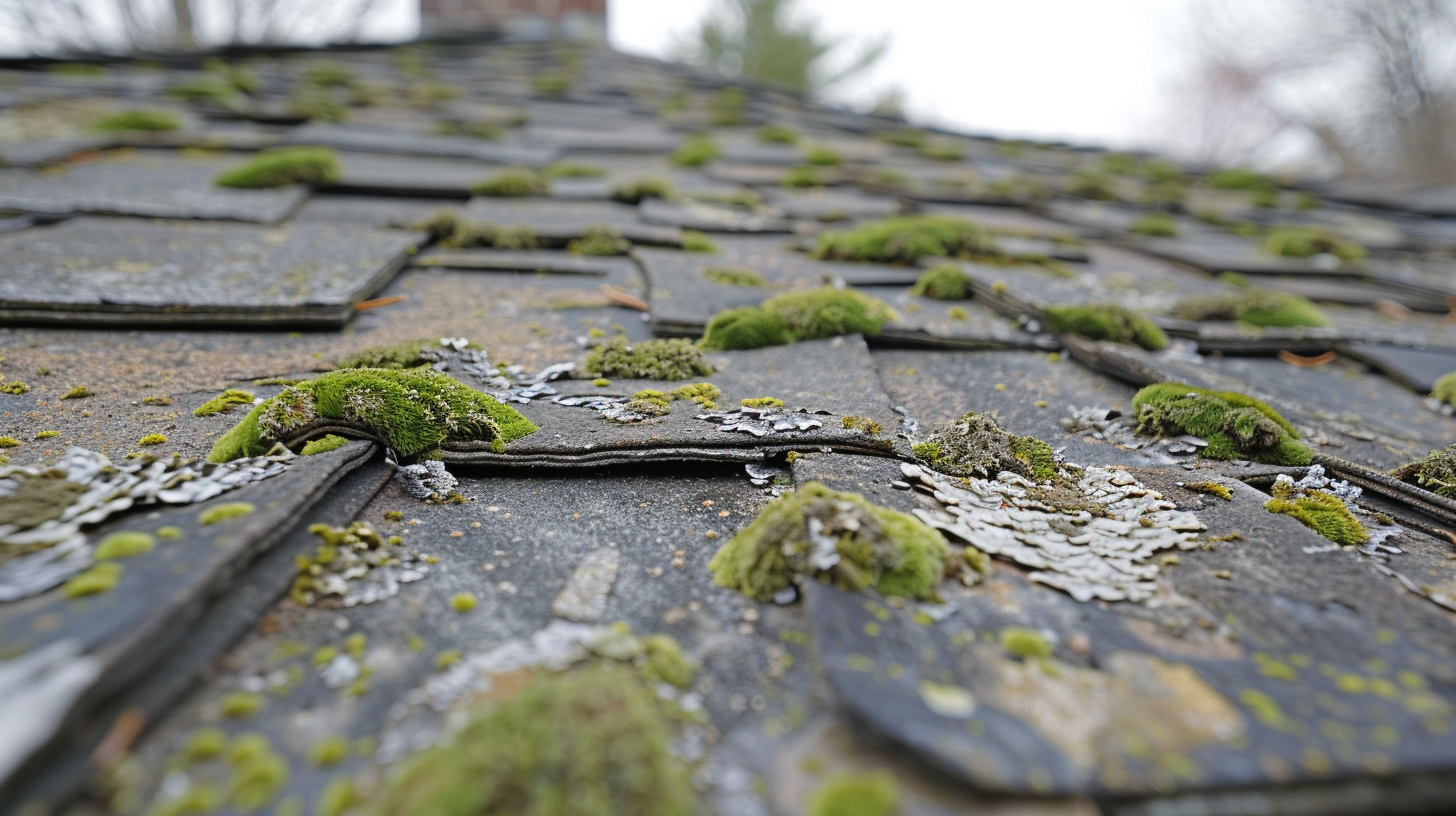
Moss Removal Tips: Gently brush moss off with a soft bristle brush. Consider installing zinc or copper strips to prevent future growth.
4. Inspecting Roof Flashings
Flashings, the metallic protectors crucial for safeguarding the integrity of your roof system's joints, play a vital role in preventing water leaks. It is essential to conduct a meticulous inspection of these components, paying particular attention to areas around roof penetrations such as chimneys and vent pipes. This careful examination is necessary for preserving the integrity of your roof system and ensuring it remains free from leaks.
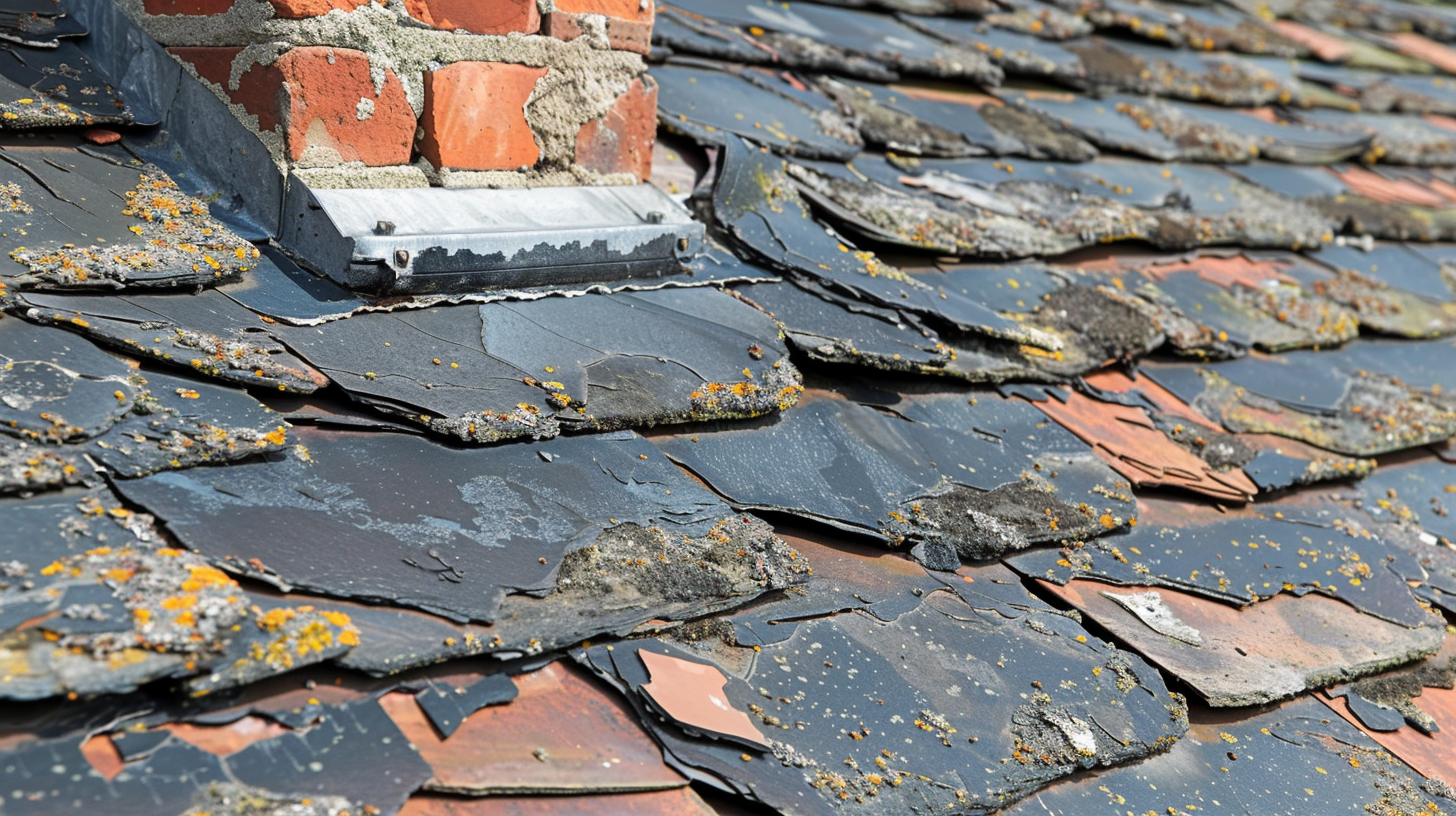
Flashing Inspection and Repair: Check flashings around chimneys, vents, and skylights. Seal any gaps with roofing cement.
5. Examining the Attic
Often, the attic serves as the early warning system for roof leaks before they become visible on the exterior. An inspection of this area can reveal hidden issues like water stains or mold growth, indicating potential breaches in the roof's exterior defense.

What to Look for in the Attic: Check for water stains, mold, and proper insulation and ventilation.
Prioritizing Safety in DIY Maintenance and Roof Repair
While the DIY approach to roof care is commendable, prioritizing safety is paramount. Employing a sturdy ladder, donning non-slip footwear, and considering a safety harness are critical precautions. For tasks that are beyond your comfort zone or require specialized expertise, soliciting the services of a professional roofing contractor is advisable.
Conclusion
Embracing regular maintenance, especially in the spring, is instrumental in extending the lifespan of your roof and ensuring the overall safety and integrity of your home. This guide, peppered with actionable advice and safety tips, is designed to equip you with the knowledge necessary for successful DIY project. However, the value of professional assessment and intervention cannot be overstated for complex or risky tasks.
Frequently Asked Questions
Can I undertake all tasks related to my roof on my own?
While many maintenance tasks, such as gutter cleaning and moss removal, are manageable by homeowners, tasks requiring specific skills or safety risks are better left to professionals.
How frequently should my roof undergo inspection?
A bi-annual inspection schedule, particularly during the meteorological spring and autumn months, is recommended to identify and address any issues proactively.
What are the telltale signs of roof damage?
Signs include damaged or missing shingles, the presence of moss or algae, compromised flashings, and interior water stains indicative of leaks. Additionally, the presence of plant growth, including specific plant species, can serve as further indicators of potential roof issues.
Can moss on my roof cause significant damage?
Yes, moss can cause substantial damage by retaining moisture against the roof surface, leading to rot and deterioration over time.
Is it advisable to walk on my roof for inspections?
Walking on your roof can be hazardous and potentially damaging. It's safer to perform inspections from a ladder or to engage.


